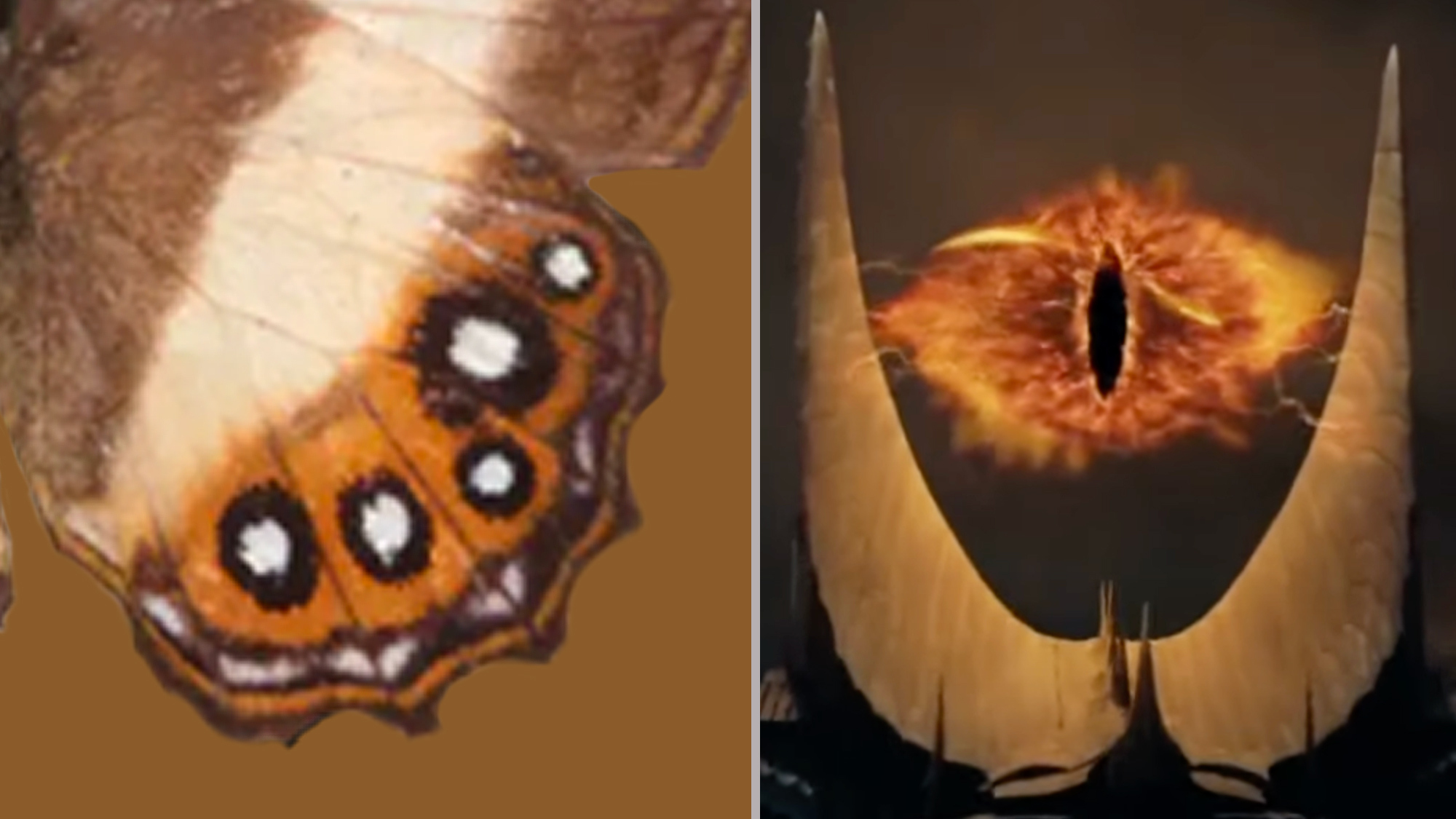

The piercing and malevolent gaze of Sauron, the powerful villain The Lord of the Rings, is being honored in a way that may even make Gandalf’s heroic eagles envious. A new genus of butterflies has been named Saurona in honor of one of fiction’s greatest villains.
[Related: Scientists Calculate Calories Needed To Walk To Mordor.]
With their fiery orange hindwings and piercingly dark eyespots, Saurona triangula and Saurona aurigera are the first two species described in this new genus, described in a study published April 10 in the journal Systematic Entomology. Scientists believe that there are more species within this genus waiting to be described.
“Giving these butterflies an unusual name helps to draw attention to this underappreciated group,” study co-author and Senior Curator of Butterflies at London’s Natural History Museum Blanca Huertas said in a statement. “It shows that, even among a group of very similar-looking species, you can find beauty among the dullness. Naming a genus is not something that happens very often, and it’s even more rare to be able to name two at once. It was a great privilege to do so, and now means that we can start describing new species that we have uncovered as a result of this research.”
Saurona triangula and Saurona aurigera are the first butterflies to be named after the epic villain, but they are not the only animals named after Sauron and other characters from JRR Tolkien’s epic trilogy. A dinosaur (Sauroniops pachytholus) and an insect (Macropsis sauroni), and has also been named after the antagonist and his eye that constantly surveys the lands of Middle Earth. Sauron’s foil and heroic wizard Gandalf also has some animals named for him, including a species of crab, moth, and beetle and a group of fossil mammals. The tragic and troubled creature Gollum has fish, wasps, and fish named after him.
Naming animals after fictional characters can help draw attention to them in the real world. A recent example comes from the devastating 2019-202 wildfires that struck Australia. The fires burned over 42 million acres and harmed 3 billion animals. Three Australian beetles that were devastated by the fires were named after Pokémon in an effort to attract conservation funding.
The Saurona butterflies are found in the southwestern Amazon rainforest and belong to a butterfly group Euptychiina. This group is difficult to tell apart by their physical characteristics alone, and the scientists on this study used genetic sequencing to help differentiate the new species.
“These butterflies are widely distributed in the tropical lowlands of the Americas, but despite their abundance they weren’t well-studied,” Blanca said. “Historically, the Euptychiina have been overlooked because they tend to be small, brown, and share a similar appearance. This has made them one of the most complex groups of butterflies in the tropics of the Americas.”
[Related: How are dinosaurs named?]
Even with major advances in DNA sequencing like target enrichment and Sanger sequencing that can produce vast amounts of DNA from samples, it took the team over 10 years to assess more than 400 different butterfly species.
They deciphered the relations between groups and described nine new genera including one called Argenteria. In English, Argenteria translates to “silver mine,” and was named by Blanca and her team due to the silver scales on their wings. Argenteria currently has six species within the genus, but there are likely more out there waiting to be discovered.
The researchers on this study estimate they uncovered up to 20 percent more uncovered species than there were before the project began, and they hope to describe even more. More description will help scientists to better understand the relationships between the different species and the issues they face.
“It’s important to study groups like the Euptychiina because it reveals that there are many species we didn’t know about, including rare and endemic ones,” said Blanca. “Some of these species are threatened with extinction, and so there’s a lot to do now we can put a name to them. There are also many other butterfly and insect groups that need attention so that they can be better understood and protected.”